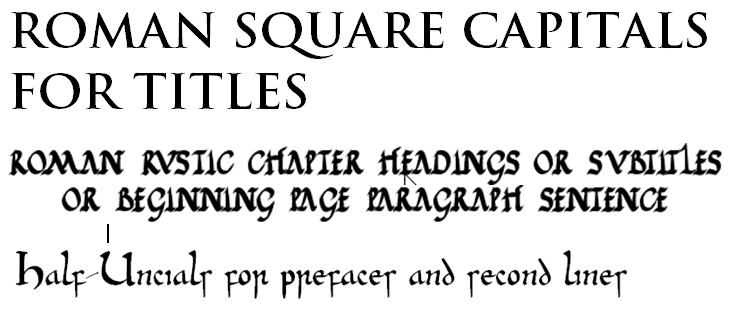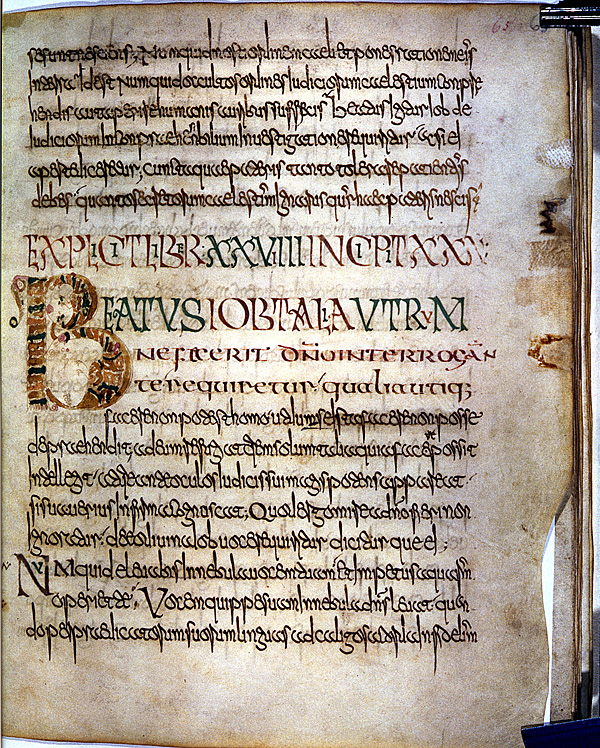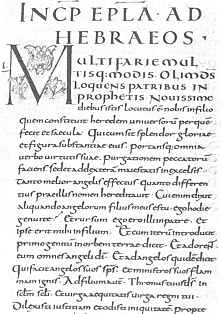Report to Charlemagne
[Editor’s note: The below is a transcription of a letter from Alcuin of York to Charlemagne. We have added headers to set off the important points Alcuin is trying to make, and we have also added in a surprising voice recording we dug up.]
My Dear Sir
To the renowned, most excellent, most invincible, most eminent conqueror and always august Emperor of the Romans, Charles, from Alcuin of York, his loyal adviser, although unworthy, expresses his due obedience in Christ.
I beseech God’s good will and grace toward your health and your well-being, including that of your sons and family. I beg of you to look kindly upon the work that I have undertaken on your behalf, as I have made a thorough review of the national hands within your great empire.
National Hands
As your excellency believed, the state of the national scripts is tremendously vast and varied. As our monks have moved from place to place, settling as teachers in new corners of the empire, their hands are evermore influenced by that of the local population. To save your excellency time, I will give a detailed overview via presentation when we next meet.
[Editor’s note: The following voice recording was inexplicably found during an archaeological dig, although we have added section titles and images of samples that we believe Alcuin may have been using. Remember that this is an extemporaneous discussion between Alcuin and Charlemagne, although Charlemagne and others remain silent as Alcuin discusses his findings. We believe this was part of Alcuin’s presentation to Charlemagne, probably presented instead of written about in his correspondence due to the issues Charlemagne reportedly had with semi-illiteracy. Alcuin mentions in-person reports several times in his letters. Note Alcuin’s ease when speaking to Charlemagne, which shows their easy, friendly relationship, even though the letter seems a bit more formal, as written communication tended toward at this time.]
Clarity and Consistency Are Key
As you will see, your excellency, these scripts are vastly different from one another, even those that have been influenced by another. This makes learning the scripts difficult for all involved and often makes reading them difficult as well. Because of our focus on education and literacy, I believe we need consistency throughout the empire, which would allow everyone to read in the same script. In addition, you can see that some of the scripts are more decorative or fancier, making them somewhat more difficult to recognize even common characters and letters. I agree that we should develop one script with common abbreviations that is not overly meandering (taking up less space than some I will show you when we meet again), making it less time consuming to write. Ligatures seem to be a partial culprit here, so perhaps we could get rid of those (or keep very few). All official and religious documents would be more legible and easier to understand, communicating the Word of God and the message of the empire more clearly.
I will bring with me examples of the script I have developed with examples of how it differences from other hands I’ve encountered, so you can see the differences yourself.
[Editor’s note: The following is the continuation of the previous recording that was discovered. We have placed it here so it will naturally follow his letter.]
Call for Hierarchy of Scripts
However, your excellency, there still may be use for some of our previous scripts. I believe it would be beneficial to use other scripts to separate text into sections, perhaps something like the following: Roman Square Capitals for titles; Roman Rustic Capitals for chapter heads, subtitles, or beginnings of pages, paragraphs, or even sentences; and half-uncials for prefaces and second lines.
Of course, we would use our font for all of the regular portions of the text. This would allow different portions of the text to stand out, but the main portion of the text would be our highly legible, easy-to-form hand. Because we are creating this script to maintain a better order to our script with literacy and education in mind, I believe that using headers and stand-out scripts to highlight important sections would be in our best interest. I have attached a few examples to better show you my meaning.
Your excellency, this first example does not have the main text in our new script, but it shows you how this has been handled in Lexeuil: Note the main text in Lexeuil Minuscule script. The larger scripts are Rustic Capitals (largest) and Uncials (mid-sized).
I have revised this segment of St. Paul’s Epistle to the Hebrews using the updated script I recommend, as you can see by the hand I’ve used. The top lines show Square Capitals with Uncials underneath, and our new script takes over as the main text below that.
With that, I must leave this letter and continue my journeys, which shall bring me back with the examples I have promised.
Fare thee well and I shall pray to God for the preservation of your most noble empire.


